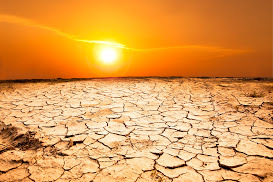What is Soil Erosion and Degradation?
 According to the Food and Agricultural Organisation (FAO), it can take hundreds of thousands of years to form a healthy topsoil one centimetre deep. In certain circumstances, that centimetre of soil can be lost in a single year due to erosion.
According to the Food and Agricultural Organisation (FAO), it can take hundreds of thousands of years to form a healthy topsoil one centimetre deep. In certain circumstances, that centimetre of soil can be lost in a single year due to erosion.
Erosion is a process that occurs naturally when either rain water or wind carries away the top layer of soil. However, many human actions can speed up this process. Tillage is the term for any farming method, such as digging or ploughing, that moves soil in readiness for planting crops. These practices disturb the soil structure making it more likely to be washed or blown away.
A healthy soil, full of nutrients is better able to withstand erosion, as the soil particles are less fine. Unfortunately, many tillage practices reduce the quality of the soil. Soil that is compacted by farming, forms a hard ‘crust’ on top and this means that rain water is less likely to be absorbed. Instead, when it rains, the topsoil is washed away. A good covering of plants or trees helps to protect the soil because the roots of the plants help to keep the soil in place. When trees are cut down to plant crops, and when rows of crops are harvested, the exposed soil is less able to withstand erosion. Deforestation, the process by which tress are cut down to provide farming land, is one of the main causes of soil erosion.
Soil degradation is the term for soil being harmed so that it no longer contains a healthy mix of bacteria and other organisms. This can be caused by the use of various chemicals such as fertilisers and pesticides. As the soil becomes degraded, it is less able to avoid being eroded.
Erosion is also caused when land is built on. A covering of concrete or tarmac, such as that used in the construction of roads and buildings, means that rainwater can’t be absorbed naturally into the ground and has to run off to nearby ground in large quantities instead, flooding those areas and increasing the risk of erosion.
In 2014, a senior official at the United Nations warned that “if current rates of degradation continue all of the world's top soil could be gone within 60 years”, though a 2021 study by Oxford University disproved this.
They found that soil erosion rates span five orders of magnitude; some are eroding quickly, some very little, and others are actually thickening.
The data, based on a global assessment of 4,285 erosion estimates from 240 studies across 38 countries, revealed that:
- 16% of soils are estimated to have a lifespan of less than 100 years
- 50% have a lifespan greater than 1,000 years
- 33% have more than 5,000 years
